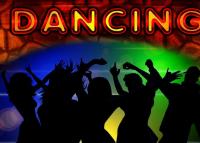dance bars
SC stands up to Maha 'mindset' over dance bars: Pushing dance bar workers underground would be worse
 Taking a dig at Maharashtra government over its persistence to curb dance bars, the Supreme Court on Monday said that it was better to dance then go to streets for begging or going to “places which are not acceptable” to earn a livelihood.
Taking a dig at Maharashtra government over its persistence to curb dance bars, the Supreme Court on Monday said that it was better to dance then go to streets for begging or going to “places which are not acceptable” to earn a livelihood.
The Maharashtra government has issued several guidelines for issuing licences to dance bars in the wake of a court order asking the government to allow dance bars to operate reported
Dance bar operators would have to provide live CCTV feed to the nearest police station in order to enable them to keep an eye on activities at the dance bar.
Chief Minister Devendra Fadnavis said: “We are not in favour of dance bars.”
However, the state has made it mandatory for dance bar operators to comply with all 18 guidelines. The primary objective of the guidelines is to provide security and avoid exploitation of dancers. The chief minister said: “So far, all the 34 requests for new licences have been rejected as none of them fulfilled the parameters.”
Harish Salve said he has materials to show that “dance bar is an animal in itself”, while acting for Maharashtra which defended its defiance of the Supreme Court’s order that had directed it to begin accepting bar licence applications, reported Indian Express.
Salve asked a bench of justices Dipak Misra and PC Pant, for additional time to produce materials highlighting the harmful sociological effects of dance bars, and submitted that the Maharashtra government will, in the interim, comply with the court’s 12 October order that had stayed its prohibitive law on dance bars.
The bench said: “We must remind the authority that the court order has to be respected. We have stayed your new law that prohibited dance performances. Now our order has to be complied with without any deviation.” “Are they (organisations) puritans? Dance performances do not take place only at these bars. Dance has been a respectable concept in India for centuries. You are calling it a social evil but this may only be a problem relating to law and order which can be regulated. We have already said no to obscenity so can you now prohibit them citing some social norms?”
The Maharashtra government is dropping a provision in the Bombay Police Act 1951 that allowed dance performances in “exempted” establishments like three-star and five-star hotels but banned it elsewhere, and proposing to have a blanket ban on dance bars in the state, reversing the Supreme Court’s July 2013 ruling, reported the Express.
The Supreme Court had categorically told the state in its July ruling that the restrictions on dance bars in the Bombay Police Act were not reasonable under Article 14 of the Constitution, and that it would be better to bring about safety measures and improve working conditions for dance bar girls.
The Supreme Court yesterday upheld the Bombay high court’s decision to strike down the ban on dance bars in Maharashtra, holding that “the cure is worse than the disease” and that safety measures and improvement in working conditions of the dancers was the solution, reported the Hindustan Times.
Now bars, restaurants, and hotels can obtain police licenses to hold dance performances on their premises. The Maharashtra police had expressed fears of increase in crime rate in letting the bars stay open, as they were “dens of anti-social elements”.
Writing a separate concurring opinion, Chief Justice of India Altamas Kabir observed:
“The right to practise a trade or profession and the right to life guaranteed under Article 21 (of Constitution) are, by their very nature, intermingled with each other, but in a situation like the present one, such right cannot be equated with unrestricted freedom like a run-away horse... it would be better to treat the cause than to blame the effect and to completely discontinue the livelihood of a large section of women, eking out an existence by dancing in bars, who will be left to the mercy of other forms of exploitation.”